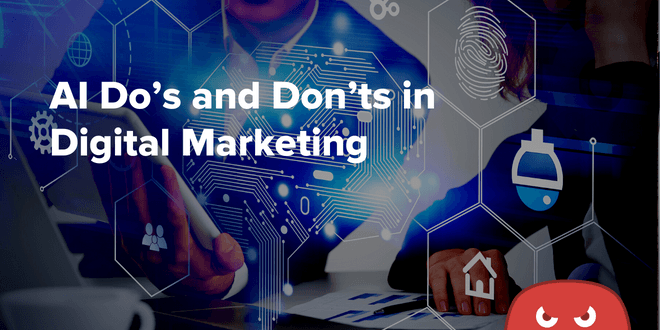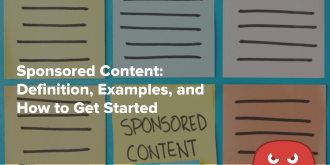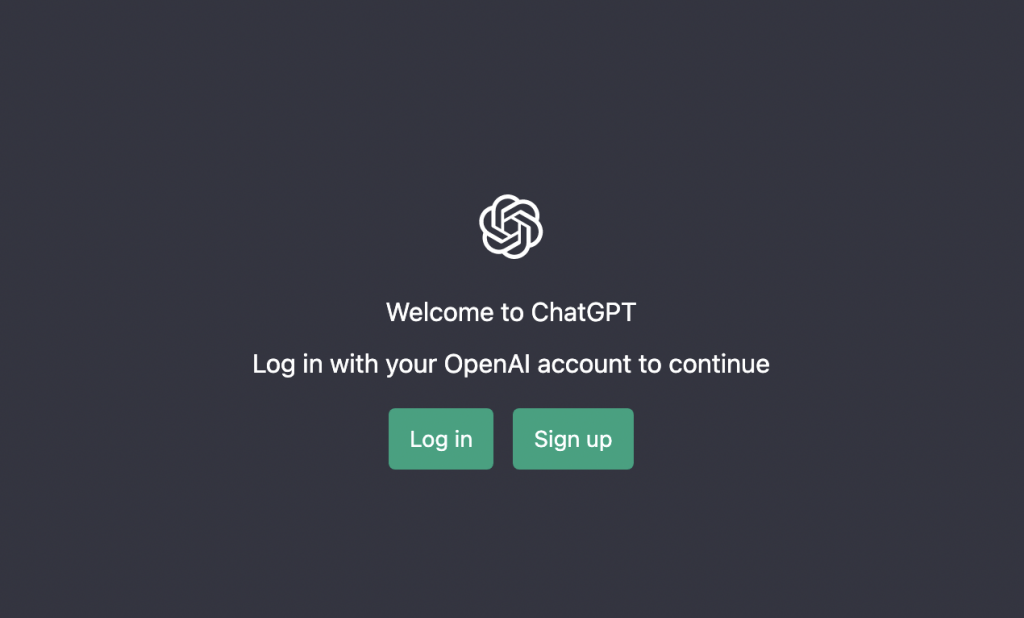Quick Links
It’s clear that artificial intelligence is here to stay, and many companies have already discovered a whole host of use cases, from automating repetitive workflows to customer service chatbots.
In particular, AI solutions are popping up left and right in the digital marketing space. AI technologies like ChatGPT & GPT-4 are capable of generating entire blog posts, landing pages, and images from scratch, which have massive potential for the future of content creation.
Many companies & digital marketing agencies are already using AI tools to curate, generate, and proofread their content – with varying rates of success.
While AI systems are definitely the way of the future for many industries, there are still plenty of risks involved with implementing artificial intelligence.
After all, AI is still in its infancy, and programs like ChatGPT aren’t without their issues, such as factual inaccuracies, plagiarism, and writing robotic-sounding text.
Before onboarding AI applications at your company, it’s crucial to understand the do’s and don’ts associated with the technology. Do it right, and you’ll save a ton of time and money on content creation, all while attracting new customers and improving SERP rankings.
Do it wrong, and you can wind up tanking your budget & reputation.
That’s why you need to consult this guide before you start adopting AI on a large scale. Stay tuned to discover the primary AI do’s and don’ts of content creation.
Understanding AI-Generated Content
Services like Copymatic offer users the ability to generate original blog posts, landing pages, & FAQ sections in real time, but how does it work?
AI content generators use neural networks that attempt to recreate the structure of the human brain within a machine.
These deep neural networks are a form of machine learning known as deep learning, which replicates the way human intelligence works.
In other words, these advanced AI algorithms are able to ‘learn’ from the large data sets they analyze, recognizing intricate patterns and building upon previous knowledge. That’s how the AI is able to write text, play games, and even generate images.
Deep learning imitates abstract thinking and has the ability to generalize facts.
While it’s a form of machine learning, deep learning is different from the traditional machine learning model. In a nutshell, machine learning algorithms learn from experience, while deep learning algorithms involve a trainer.
That means deep learning systems are trained on specific data sets that contain tags, classes, and indicators. If the AI contains no training on certain data sets, it won’t be able to produce content about them.
For example, the chatbot ChatGPT only has training for online data up to September 2021, which is one of its most significant drawbacks. As a result, it can’t produce content covering recent events, as it has no knowledge of them in its database.
The different types of AI tools
There are many AI-powered tools available that can assist with everything from taking customer service calls to automating patient text reminders for healthcare providers.
Here’s a look at the most popular AI tools in use today:
- Natural Language Processing (NLP). Natural language processors mimic the way people communicate to generate & proofread content. Platforms like Copymatic use NLPs, as do tools like Grammarly.
- Text generators. A text generator is capable of producing content based on its training data. Text generators are handy for automating blogs, articles, landing pages, and more.
- Video generators. There are even tools that can create videos based on sets of still images. Some tools can even create short videos based on your blog posts, which is excellent for generating short product demo videos.
- Image generators. Certain chatbots can generate images based on text prompts, and the results can be quite impressive.
As you can see, there are plenty of powerful AI tools that you can start using at your company right now. Yet, it’s best to do plenty of research before spending time and resources on implementing an expensive new AI tool.
That doesn’t mean that you can’t use these tools to improve your customer experience and boost your SEO profile; you just have to be thoughtful about your approach.
What is ChatGPT?
If you’ve read any mainstream news article within the past 6 months, you’ve no doubt come across the hype surrounding ChatGPT.
But what is it?
ChatGPT is an open-source natural language processing tool made by Open AI that enables users to have human-like conversations with an AI chatbot. Using text-based prompts, users can get ChatGPT to answer questions and generate college essays, poems, songs, articles, and more.
Launched on November 30th, 2022 & fully open to the public, users flocked to try out the tool for themselves. It’s been able to produce incredibly impressive results while also revealing a dark side that’s surprised some.
Ever since ChatGPT exploded in popularity, lots of major tech companies started releasing their own chatbots, such as Microsoft, Amazon, Apple, and Facebook.
While the tool is reliable most of the time, sometimes it hallucinates, makes up results, and can even exhibit racist & sexist biases.
GPT stands for generative pre-trained transformer. The GPT-4 model is trained on over 175 billion machine learning parameters, making it the largest neural network to date.
The Controversy Surrounding AI Tools
The prevalence of AI has its fair share of detractors, stating serious concerns surrounding security, malware, and losing the human touch.
Programs like ChatGPT are highly intelligent when it comes to writing code, as they’re capable of writing entire applications and software. The flip side to this is that hackers can use AI chatbots for nefarious purposes, such as writing malware & phishing emails.
ChatGPT can also write fake news stories and imitate others, leading to concerns about identity theft & spreading misinformation.
Then there’s the issue surrounding plagiarism. Whenever content generators produce text, they aren’t forming new ideas from scratch. Rather, they’re collecting information contained in their training data to generate content.
While most content generators are able to pass plagiarism checks, the content they produce contains no original research, insights, conclusions, or data. For this reason, most companies only use AI to generate small pieces of text – as the algorithms still aren’t capable of producing thought leader-tier content.
Open AI CEO and Loopt co-founder Sam Altman went so far as to tweet that Chat-GPT is overhyped and that while it’s impressive, it still has a long way to go and sometimes makes silly mistakes.
Altman also points out that AI will change the world, but we still have a long way to go before that happens.
The AI Do’s and Don’ts
Now that you’re up to speed on the current state of artificial intelligence, it’s time to dive into the AI do’s and don’ts as they relate to digital marketing & content creation.
Besides learning how to form a rock-solid AI digital marketing strategy, learning the best practices related to AI will help you avoid incurring penalties from Google and other search engines.
AI Do’s
Let’s begin by taking a look at what you SHOULD do when implementing AI at your organization.
DO create relevant content using AI
High-quality content won’t benefit you at all if the subject matter isn’t relevant to your target audience, which is why relevancy should be at the top of your priority list when creating content.
The good news is that AI can help you create highly relevant content in more than a few ways.
First, using AI tools to analyze your customer data will reveal valuable insights into your target audience’s interests, preferences, and behaviors – which is a goldmine for developing content topics.
After that, you can use other AI applications to conduct thoughtful SEO keyword research, such as our free keyword planner tool from The HOTH. With it, you will uncover the keywords your audience searches for the most, complete with helpful metrics like keyword difficulty and search volume.
With valuable customer insights and a set of SEO keywords, you’ll get the best & most relevant results from AI text generators when creating content.
DO check for plagiarism
As stated previously, the content that AI text generators create is compiled from the amount of data they’ve been trained on. As a result, the content comes from other sources, even if it’s reworded & rearranged.
That’s why it’s always necessary to run a plagiarism check before publishing AI-generated content.
The last thing you want is for a piece of your content to get flagged for plagiarism, which will hurt your reputation & delay your content creation efforts.
One of the most reliable ways to avoid plagiarism is to use a combination of AI-generated text & your own insights and opinions on a particular topic. That way, you still gain the benefit of speeding up content creation while ensuring that your content isn’t copied & contains at least some original insights.
DO use the right tools
If you want to find success with AI, it’s imperative that you use the best tools available. That includes machine learning frameworks, APIs, open source platforms (like ChatGPT), and AI-powered analytics software.
Before you decide to start using a tool, conduct thorough research on it online. To do so, check user reviews on multiple different sites, read professional reviews from trusted websites, and look into their competitors.
That way, you’ll avoid wasting time and resources on a substandard tool or a tool that doesn’t perform the functions you need it to. For instance, if you need an AI chatbot that can generate images, ChatGPT will only disappoint you (it can create prompts for tools like DALL-E to create images, but it can’t by itself).
DO use AI for content curation
Arguably the most effective use for AI is to curate content instead of creating it.
What does that mean?
It means that AI tools can help you brainstorm blog topics, create detailed outlines, conduct keyword research, and gain insights into customer behaviors.
As such, you’ll be able to get rid of writer’s block for good. If one of your writers is having trouble writing a blog intro, they can use AI text generators to get the ball rolling. Content strategists can use AI systems to develop relevant topics to fill their editorial calendars.
There are AI-powered tools for coming up with blog titles, outlines, conclusions, and more, which makes the content curation process quicker & easier than ever before.
DO double-check factual content
AI programs like ChatGPT are not infallible, nor are they always correct. That’s why you should double-check all factual information generated by AI chatbots and tools.
These programs have the tendency to make up facts out of thin air, and they’re only as smart as the data they’ve been trained on. Posting factually inaccurate content will tarnish your reputation as a thought leader, so make sure you go over all AI-generated blogs with a fine-toothed comb.
AI Don’ts
Now let’s take a look at what you should avoid when working with AI.
DON’T overly rely on AI
While AI tools can certainly help with content creation and other tasks, you shouldn’t rely on them entirely. That’s because of their tendency to get facts wrong or misinterpret your prompts.
Also, keeping some in-house writers & creators will maintain the human touch to your content, which is essential. It’s too early to let AI programs completely run your content strategy.
DON’T expect perfection
It’s easy to view AI text generators as all-knowing beings that create perfect content 100% of the time, but that’s simply not the case. AI deep learning algorithms are still developing technologies, and there are bound to be mistakes here and there.
As such, you need to closely review every piece of content generated by an AI to ensure it’s free of plagiarism, factual errors, and any biases.
DON’T attempt to do it alone
Since this type of AI is so new, few people truly know how to use it properly. That’s why you shouldn’t attempt to implement AI systems by yourself. Instead, seek the help of seasoned AI experts that know how to get you set up for success.
Final Thoughts: AI Do’s and Don’ts
AI chatbots, image generators, and text generators show a ton of promise for the future, but there are plenty of kinks left to iron out.
That’s why there are clearly defined AI do’s and don’ts to follow; otherwise, you could wind up ruining your reputation.
As long as you don’t overly rely on AI, double-check all facts, and use AI for content curation, you’ll find success using the AI tools currently available.
Do you need help forming a winning digital marketing strategy for your company?
Then don’t wait to check out our white-label digital marketing services at The HOTH. We offer managed SEO services through HOTH X and content creation services through HOTHBlogger. Our gurus are well-versed in current AI programs, so don’t wait to book a consulting call today.












